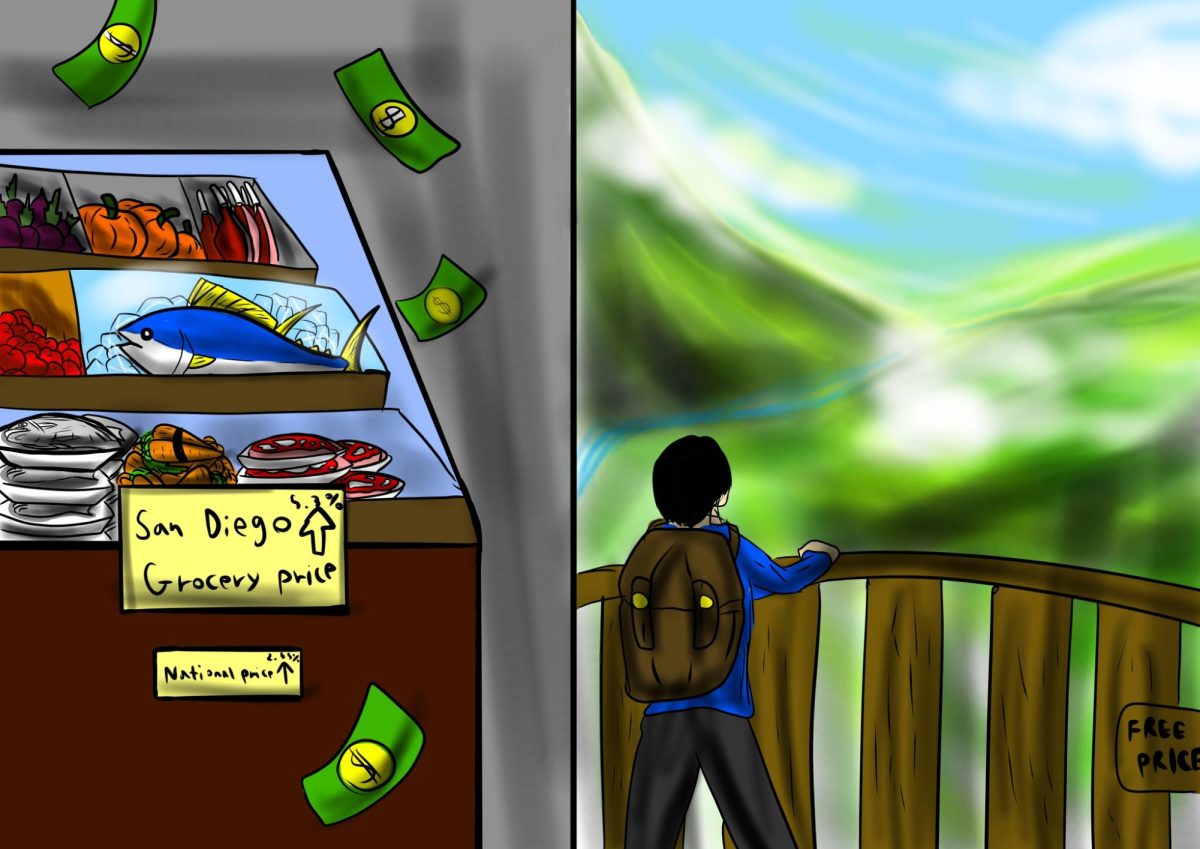Padres season tickets, expensive dining and concert tickets. A quick glance at the elite San Diegan lifestyle, or really, the lifestyle of many students at the school, will leave the unsettling impression that fun and happiness is exclusive: “fun” is attained with money and resources. A 2024 U.S. affordability report found that San Diego is among the top 10 most expensive U.S. cities. But not only are housing, food and gas prices through the roof, but so is the price of enjoying what our metropolitan city has to offer.
“If I moved to San Diego right now, it would not be affordable for me,” Japanese teacher Sato Umabe said.
Umabe recalls the challenges of initially moving to San Diego. She was “lucky enough” to buy a house early on and states that “housing prices have drastically changed in the last 20 years.” The average San Diego home value is $1,003,836, making homes more than 198% more expensive than the average US home.
“San Diego is affordable for people who make a lot of money, but for us kids who can’t earn beyond minimum wage, [it is] definitely not,” Kiki Hoglen (11) said.
Besides adults with home owning expertise, students find that the cost of our city provides for an unattainable lifestyle. One trademark event of the San Diego experience are Padres games. It is a known fact that locals are proud to represent and support their Major League Baseball Team, but even this comes at a price. A Padres ticket is double that of a ticket to the Dodger Stadium. These high prices are because of limited seating at Petco Park, and are exaggerated by residency requirements to buy a ticket. Attendants must live in San Diego County, southern Orange County, western Arizona or the Las Vegas region, making tickets more “exclusive.” Many San Diegans watch Padres games, but only high-paying individuals get access to the stadium.
“I used to have Padres season tickets, but it got too expensive, so I gave it up,” Umabe said.
Earlier this year, you could purchase a Dodgers ticket for the low price of $36, while the lowest available price of a Padres ticket when they played the Dodgers in late 2024 (Oct. 5) at Petco Park was $207.
Between groceries and restaurants, another nearly impossible economic aspect of San Diego living is food prices. This year, grocery prices in San Diego are up 5.3%, which is double the national rate. Besides grocery prices, a meal out for two people is $92, which constitutes a large portion of students’ paychecks.
“I try to limit myself to [spending] $100 per week, and it’s really all being spent on food,” Idona Riggs (12) said.
Working a minimum wage job has led Riggs to take accountability for her spending habits. While the majority of Riggs’ allotted spending goes towards meals on-the-go, Umabe seldomly eats out, mainly because of unnecessary and extreme prices at local restaurants.
“I cook at home, and when I go out, it’s to a nice restaurant, not fast food,” Umabe said.
These prices have caused locals to reconsider attending local sports games, purchasing quality groceries and eating out, but many, like Riggs, “resort to free things.” Both Hoglen and Riggs enjoy San Diego for its natural beauty, like local hikes and beach excursions.
“Lots of popular and fun activities require money, but San Diego has so many other free options for fun,” Hoglen said.
Another glance at the San Diegan lifestyle will reveal another layer that excludes Padres season tickets or expensive dining experiences. You’ll see students hiking at Torrey Pines, or sunbathing at Cardiff. Taking a sunny-day stroll, or reading a book in the park. Yes, while living in San Diego requires unimaginable amounts of money, to truly enjoy San Diego means taking advantage of its natural beauty, which has no cost at all.
“We are lucky to be here,” Umabe said. “It’s the dream city.”










